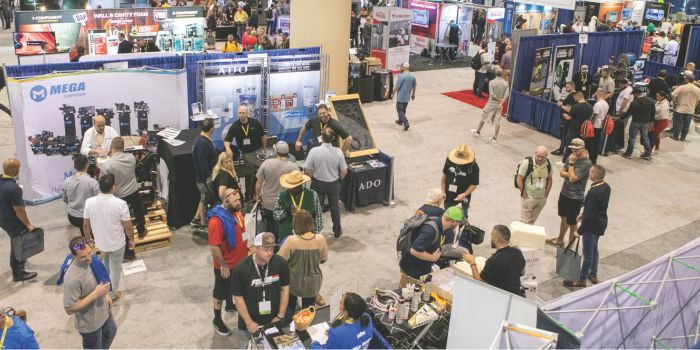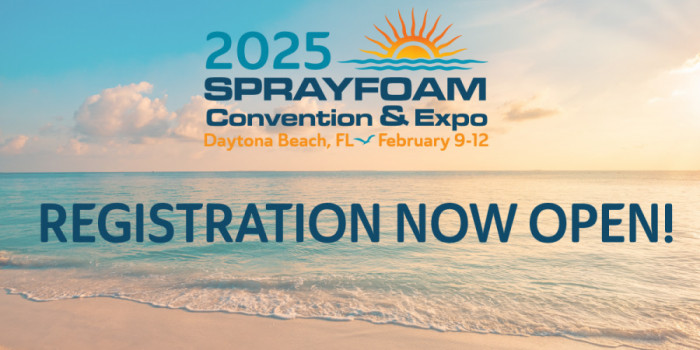Using Undocumented SPF Products


Spray Foam Magazine – Summer Issue 2022 – SPF materials have been in short supply during the past several months. Because of this supply challenge, many SPF contractors may be installing whatever products are available. In today’s market this may be considered a necessity, but using unfamiliar products is a risky proposition – especially if these products are not properly qualified for construction use.
Building Code Requirements for SPF
Under the U.S. building codes, foam plastic insulation materials must meet two fundamental requirements. The first stipulates that the R-value of the product must be measured by an independent lab using an acceptable test method and must be clearly stated by the manufacturer. R-value reporting is a basic requirement by the U.S. Federal Trade Commission (FTC) as part of the ‘R-Value Rule’ contained in 16CFR460i for home insulation. The second requirement calls for the product to be tested per ASTM E84ii/UL723 (Stiener Tunnel Test) by an independent lab for surface burning characteristics to verify the flame spread and that smoke developed indices are less than or equal to 75 and 450, respectively.
At a minimum, these test reports must be available and presented to a code official as part of their inspection process. Most code officials do not want to review this test data and prefer to have a code compliance report issued by an accredited certification agency, such as ICC-ES, IAPMO, Intertek, Dr. J and others. For this reason, U.S. SPF manufacturers publish code compliance reports for nearly every SPF insulation and roofing product used in the U.S.
Certification agencies review the independent test data and develop code compliance reports using guidelines such as ICC-1100iii or IAPMO ES1000iv. These standards specify the mandatory tests for R-value and surface burning along with optional performance tests for density, air permeance, water vapor permeance, strength, dimensional stability, approved ignition/thermal barrier assemblies, etc. Additionally, these certification agencies conduct regular random sampling of the material to assure consistency and compliance with the information published in the code compliance report.
Chemical Safety Requirements for SPF
OSHA requires every hazardous chemical to have a Safety Data Sheet (SDS), a detailed document prepared by the manufacturer or importer of a hazardous chemical which describes the physical and chemical properties of the product. SDS’s contain useful information regarding toxicity, flash point, procedures for spill cleanup, storage guidelines, and exposure control. OSHA requires an SDS for the A-side and B-side chemicals of SPF be readily available to help first responders in the event of an accident or chemical spill.
What are the Risks of Installing Undocumented SPF Products?
Installing SPF products without proper documentation poses a significant risk for SPF contractors. For example, closed-cell SPF without R-value testing may or may not include blowing agents – meaning you could be installing a foam at R4/inch instead of R6 to R7/inch. Not only will your customers be disappointed, but installing an insulation without a measured R-value could result in an issue between the contractor and the FTC. Additionally, some closed cell products may use HFC blowing agents, which are now illegal to use in 12 U.S. states and Canadav.
Not having a valid SDS for hazardous chemicals is an OSHA violation that can result in costly citations. Moreover, the SDS provides critical chemical safety information for the use and handling of chemicals.
Additionally, the risk of installing a foam in any building without proper fire test data is much greater. All SPF insulation products contain flame retardants in the B-side to pass the surface burning test. Flame retardants are one of the more costly components in the B-side. If you are in possession of foam without proper fire testing, assume there may be no flame retardants in the product at all. That presents a significant life safety risk for the occupants and SPF installers.
What should contractors do?
There is no question that installing SPF products that have not been properly tested and documented poses significant risk to your business. Installing insulation without a reported R-value not only increases the risk of poor performance and customer dissatisfaction, but it also poses problems for code compliance, may subject a contractor to action by the FTC and may be in violation of state law if the foam doesn’t use low-GWP blowing agents. Using foam chemicals without a proper SDS or documented fire tests is a significant life safety hazard for your customers and your employees.
The solution is simple. Responsible contractors should never install SPF products that are not properly tested and documented.
i CFR-2011-title16-vol1-part460.pdf (govinfo.gov)
ii Standard Test Method for Surface Burning Characteristics of Building Materials (astm.org)
iii ICC 1100-2019 Standard for Spray-applied Polyurethane Foam Plastic (iccsafe.org)
iv IAPMO ES1000-2020 (docuarea.org)
v Polyurethane (americanchemistry.com)
About the Author Rick Duncan Ph.D., P.E is the Executive Director of the Spray Polyurethane Foam Alliance (SPFA), the industry’s leading organization representing contractors, material and equipment manufacturers, distributors and industry consultants.
Disqus website name not provided.










































